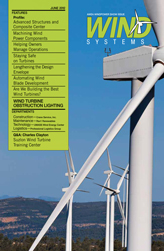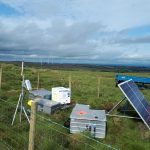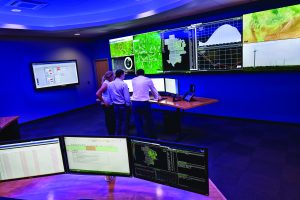In the past few months we have discussed crane rigging, types of cranes, and how to remove blades. This month we will be taking a step back and discussing the behind the scenes of wind park maintenance. Clients will ask if we can get the crane on-site in a few days or within a few hours. We always say yes and meet our promise. But dispatching a crane is not easy. It is actually quite a difficult process.
There are so many factors behind the scenes that determine when and how we get a crane on-site. Every day we are faced with different challenges; challenges that change daily due to employee locations, weather, previous and future crane jobs, and actual erection time.
Employee locations change all the time. We have drivers spread out all over the Southwest picking up and dropping loads off. With our Manitowoc model 16000 we need 18 truckloads to get the 500,000 lb. crane on-site. The coordination required to make this happen is immense. We have to coordinate with all of our branches to find the best and most efficient way to get the trailer loads to the site safely and on-time. This can get difficult, but we have an amazing dispatch team that makes sure we meet our deadlines.
Weather can play a big part in whether we can get on-site. Weather and storm systems can delay trucks because the roads cannot be traveled. Wind and storm systems can exist in areas where the model 16000 can be effective in wind corridors. We were recently going through tornado alley with our 18 loads, and needless to say, we had to slow things down and take more time to navigate the corridor. The roads that exist on wind parks and bluffs are not the best or easiest roads to maneuver. Any moisture can turn a dirt road into a challenging adventure. The roads aren’t impossible to travel, but rather more difficult and time consuming for our crews.
Previous jobs or the next job can also set the tone of how we get a crane to a wind park. If we are taking down a gearbox we can utilize a wide variety of cranes, but we are limited logistically. There is no telling where a crane will be in any given day or hour. Things can change so fast that one minute we have cranes available and 10 minutes later they are all booked and getting prepared to leave. Where we excel is in our experienced dispatch team. They are able to keep our cranes moving in and out of wind parks effectively and on-time all while keeping them busy the rest of the day. As I stated in previous columns, we can be “winded out,” which can further delay future projects within a wind park and outside. There are days when we are getting ready to leave the yard and get notification moments before we leave, that the wind has picked up and we are unable to work.
Crane erection time can be a challenge in wind parks, as well. When we are moving our crawlers, lattice boom truck cranes, or hydraulic cranes, the process or erection can vary. A typical hydraulic crane on a wind site may only take a few hours, but is limited to what parts it can hoist. The crawler crane can vary on erection time depending on which crawler we use. For our Manitowoc 2250, we can erect this model crane in as little as eight hours or it can take up to two to four days depending on other attachments we add to it, like the Max-er heavy lift attachment. For our Manitowoc model 16000 we can erect this crane in the same time frame as our 2250. Typically erection can take a day’s worth of work. Although, as previously stated, a number of factors can affect erection times. Building a crane on a wind site can also be difficult due to the lack of room to erect the crane.
Working in wind parks can be interesting and can keep our team of dispatchers busy. We are blessed to have a dedicated dispatch team that spans the Southwest. Having a team that not only works well with clients, but also is also highly skilled contributes to our success.
When our crawler cranes are moving at the rate they are – knowing the location is just as is crucial. In the grand scheme no one piece is more or less important than the other, but having an experienced dispatch team with more than 20 years experience means less time from call to delivery, which is beneficial to everybody.































